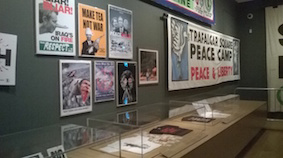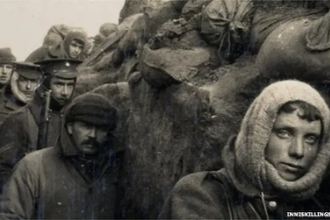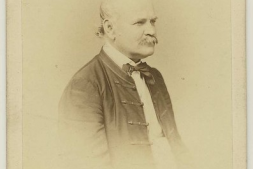Imperial War Museum tells stories of anti-war campaigners

Are you surprised that London’s Imperial War Museum – yes the museum in South London with two massive naval guns outside - is running a major exhibition charting the history of the anti-war movement in Britain. ‘People Power: Fighting for Peace’ contains more than 300 artefacts and artworks. But even more impressive, it is respectful towards those who take seriously, ‘Blessed are the peacemakers’.
From conscientious objectors to peace camps and modern day marches, the exhibition tells the stories of passionate peace people over the past 100 years and the struggles they have endured for the anti-war cause.
The exhibition begins with the First World War and the introduction of conscription in 1916, after volunteers for the army had dried up. Around 16,000 men became conscientious objectors (COs), at a time when, to do so, risked facing abuse and imprisonment. Despite early patriotic fervour within the population at large, the disastrous costs of the conflict – recorded so memorably by war artists such as CRW Nevinson and Paul Nash – ensured that, during the Twenties, a fledgling peace movement grew. Nevinson’s painting ‘The Unending Cult of Human Sacrifice’ (1934) is displayed, combining religious imagery with the symbols of modern warfare, and suggesting a near continuous cycle of conflict over the twentieth century.
During the Second World War, there were 62,000 COs. Many undertook courageous and life-threatening work, including defusing bombs. The biggest section of the show is devoted to the Cold War, when the spectre of nuclear oblivion hung over human society. Visitors can view some of the chilling public information films on what to do in the event of the nuclear attack. Choosing a ‘fall-out’ room in your own house was one instruction, and it was preferable that your house had a basement room without outside walls. There can be no doubt the danger of nuclear war was seen to be real.
The exhibition contains a wall of peace posters from the Sixties and footage from Aldermaston peace marches. The faith dimension to peace work receives some attention - a young Bruce Kent is shown leading a march in 1983 in his role as General Secretary of the Campaign for Nuclear Disarmament. The Greenham Common Women’s Peace Camp is highlighted, with a photo of 30,000 women encircling the nine-mile perimeter fence in 1982, and with Catholic Sarah Hipperson giving her memories of the camp. Actors Sir Mark Rylance and Vanessa Redgrave voice their opposition to war.
Resistance to the Iraq War focuses particularly on the ‘Stop the War’ Coalition and includes a poster of a smiling Tony Blair appearing to take a selfie in front of a massive explosion in a desert. There is footage of disenchanted Gulf servicemen returning their medals to Downing Street. Also placards from the largest anti-war demonstration Britain has ever seen – where at last one million people marched to Hyde Park on 15 February 2003 to try and stop the invasion of Iraq. It failed to do this, but the witness of so many people in London and around the world is remembered. As a poster at the entrance says: ‘For many the act itself – of participating, of having the right to publicly voice an opinion and act on the basis of your own conscience – is what matters most.’
People Power runs at the Imperial War Museum until 28 August. See: www.iwm.org.uk/exhibitions/iwm-london/fighting-for-peace Entry fee £10
See also:
ICN 17 May 2017 - London: Frank Cottrell Boyce to speak at Peace History Conference


















